
How to Incorporate Water Features Without Overpowering Your Landscape
- Why Incorporate Water Features into Your Landscape?
- Choosing the Right Water Feature for Your Space
- Designing Your Water Feature Without Overpowering the Space
- Common Mistakes to Avoid When Adding Water Features
- Real-Life Examples of Subtle Water Features in Landscaping
1. Why Incorporate Water Features into Your Landscape?
Water features can add a soothing and dynamic element to any landscape, creating a peaceful and calming atmosphere. From small fountains to koi ponds, the sound and movement of water bring a touch of nature and serenity to outdoor spaces. However, when designing your landscape, it's important to balance the presence of water features so that they enhance your outdoor area without overwhelming it. The key is to create harmony between the water feature and the rest of your landscape design, making the water element an integrated part of the environment.
Incorporating water features has several benefits. They can attract wildlife, improve the air quality, and even mask unwanted sounds from traffic or neighbors. Whether you're working with a small backyard or a large garden, water features can be adapted to suit different space sizes and landscaping styles. However, it’s important to plan the placement and size carefully to ensure the water feature doesn’t dominate the area.
2. Choosing the Right Water Feature for Your Space
The first step in incorporating a water feature is choosing the right type for your space. Here are some popular options:
2.1. Fountains
Fountains are one of the most common and versatile water features used in gardens. They can range from small tabletop fountains to larger, more elaborate designs. Fountains offer a variety of sounds, from gentle trickles to more pronounced splashes, which can provide a soothing background noise. For smaller spaces, a tabletop or wall-mounted fountain can add a touch of elegance without overwhelming the landscape.
2.2. Ponds
Ponds can create a focal point in a garden and offer the opportunity to introduce aquatic plants and fish. However, ponds require maintenance, so it's important to consider the upkeep involved. If you have a large garden or backyard, a well-placed pond can add depth and life to the landscape. For smaller gardens, consider using a small pond or container pond to keep the feature in proportion with the available space.
2.3. Waterfalls and Streams
Waterfalls and streams are ideal for creating a more dramatic, dynamic water feature. A stream running through your garden or a small waterfall cascading into a pond can add movement and visual interest. These features can be built into the natural contours of the landscape, making them feel organic and integrated. However, they should be designed to scale with the garden to prevent them from becoming overpowering.
2.4. Birdbaths and Decorative Basins
If you're looking for something simpler and more understated, a birdbath or decorative basin can provide a small but impactful water feature. These features add the benefit of attracting birds to your garden while maintaining a subtle presence. Birdbaths come in a variety of styles, from traditional stone designs to modern, minimalistic basins. This type of water feature works well in small spaces or as an accent piece in a larger garden.
3. Designing Your Water Feature Without Overpowering the Space
Once you’ve chosen your water feature, it’s important to design and place it in a way that complements your landscape without taking center stage. Here are some key considerations for ensuring your water feature doesn’t overpower your space:
3.1. Scale and Proportion
The size of your water feature should be in proportion to the space you’re working with. In smaller gardens, opt for smaller fountains or ponds that won’t overwhelm the area. Large ponds, waterfalls, or streams may look stunning in spacious backyards but can easily overpower a smaller space. When designing your feature, ensure that it’s not the only focal point in the garden. Surround it with plants and other elements that balance its presence.
3.2. Placement
Where you place your water feature is crucial. Placing it near seating areas, walkways, or the entrance to your garden can help integrate it into the overall design. It’s important to think about how the sound of running water will affect the space. If you want a calming atmosphere, place your water feature in a quieter corner of the garden. For more dramatic effects, a feature placed near a patio or gathering area can become a conversation starter without overwhelming the space.
3.3. Complementing Surrounding Elements
Your water feature should complement the other elements of your garden. Use surrounding plants, rocks, and materials that blend seamlessly with the feature. For example, if you have a pond, add water-loving plants like lotus or water lilies around the edges. For a fountain, try placing it among shrubs or flowers that echo the shape or color of the water feature. The goal is to create a harmonious design where the water feature enhances the space without becoming the sole focus.
3.4. Maintenance Considerations
Before you install a water feature, think about the long-term maintenance it will require. Waterfalls and ponds, in particular, need regular cleaning and upkeep to prevent algae build-up and ensure the water remains clear. If you want a low-maintenance feature, consider a birdbath or decorative basin that requires less attention. The simpler the feature, the easier it is to maintain, but larger features like ponds or streams can add more dynamic beauty to your landscape with a bit of extra effort.
4. Common Mistakes to Avoid When Adding Water Features
When incorporating water features into your landscape, it's important to avoid common design mistakes that can lead to an overpowering or poorly integrated feature:
4.1. Over-Sizing the Water Feature
As mentioned earlier, scale is key. A large water feature in a small garden can overwhelm the space and dominate the landscape. Always choose a water feature that is appropriate for the size of your garden, and consider how the feature will work with the overall design. Smaller spaces require smaller features, and larger gardens can accommodate more substantial water features.
4.2. Neglecting the Sound
Water features can create beautiful sounds, but if placed incorrectly, they can be too loud or disruptive. If your goal is a peaceful garden, ensure that the sound of running water doesn’t drown out the rest of the atmosphere. A gentle trickle is perfect for relaxation, but a loud cascade may disturb the tranquility of your outdoor space.
4.3. Forgetting About Functionality
Incorporating a water feature for aesthetic purposes is important, but don’t forget about its functionality. Ensure that the water feature is designed to work well with the rest of your garden. For example, a pond should have a filtration system to keep the water clean, and a fountain may require a pump that is easy to maintain. Always consider how the feature will fit into your daily garden activities.
5. Real-Life Examples of Subtle Water Features in Landscaping
Here are a few examples of how homeowners have successfully integrated water features into their landscapes without overpowering the space:
Emma, a garden enthusiast in California, shared her experience: “I wanted a calming atmosphere in my backyard, so I installed a small, bubbling fountain near my seating area. The sound of water gently flowing creates a peaceful environment without being too overwhelming. I surrounded the fountain with soft, flowering plants to tie it all together. It’s the perfect little oasis.”
John, an avid gardener from Oregon, also found a subtle way to add a water feature: “I have a small pond with a few koi fish, but I kept it compact and surrounded it with rocks and low-growing shrubs. The pond doesn’t take up much space, but it adds a sense of tranquility and attracts birds, which I love. It’s a beautiful addition to my landscape.”
These examples show that water features, when done correctly, can transform your garden into a peaceful retreat without overwhelming the space. The key is balance and subtlety.




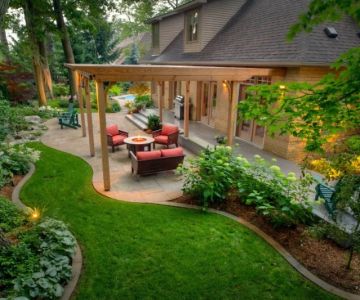



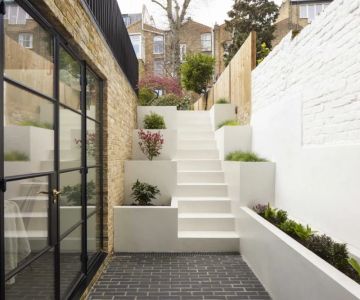
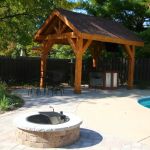 Creative Landscapes Inc.5.0 (16 reviews)
Creative Landscapes Inc.5.0 (16 reviews) Buckeye Outdoor Management0.0 (0 reviews)
Buckeye Outdoor Management0.0 (0 reviews) Innovative Landscaping LLC5.0 (3 reviews)
Innovative Landscaping LLC5.0 (3 reviews) Envirocraft0.0 (0 reviews)
Envirocraft0.0 (0 reviews) Creekside Turf Management, LLC5.0 (103 reviews)
Creekside Turf Management, LLC5.0 (103 reviews)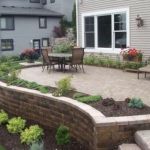 Campos Landscaping5.0 (3 reviews)
Campos Landscaping5.0 (3 reviews) How to Use Vertical Gardening to Max Out Small Yards
How to Use Vertical Gardening to Max Out Small Yards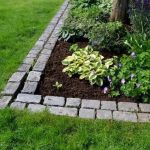 How to Use Perennial Borders to Frame Walkways
How to Use Perennial Borders to Frame Walkways How to Create a Landscape That Grows With Your Family
How to Create a Landscape That Grows With Your Family DIY vs Professional Landscaping: Pros, Cons & Cost Breakdown
DIY vs Professional Landscaping: Pros, Cons & Cost Breakdown How to Create a Front Walk That Makes a Great First Impression
How to Create a Front Walk That Makes a Great First Impression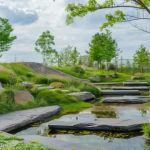 How to Design for Natural Drainage Without Artificial Systems
How to Design for Natural Drainage Without Artificial Systems